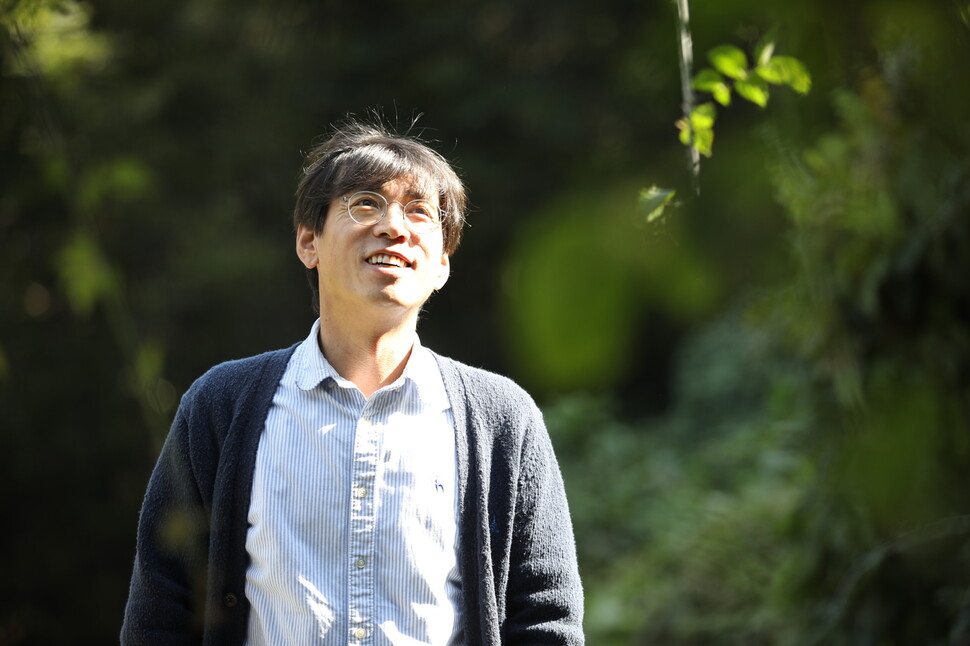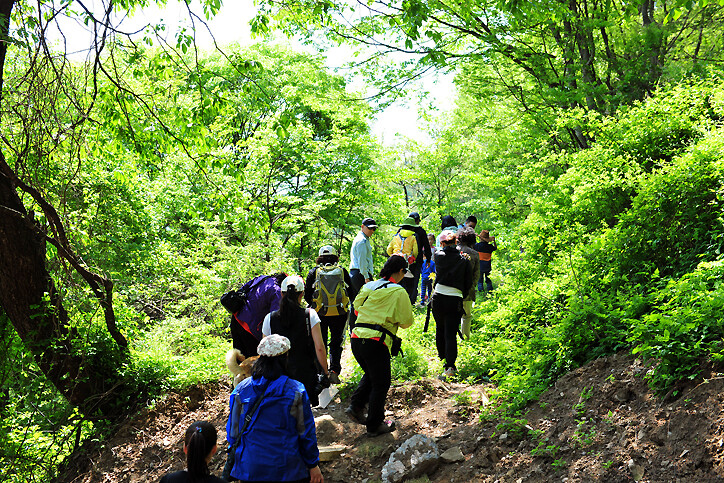Attunement: Divine Stewardship
AUGUST 14, 2022
"The language of the familiar three earth dimensions may be said to be words. The language of the fourth level, the apex meeting point of below and above, is attunement."

by John Gray and Chris JorgensenListen to Audio
John Gray: All of us participating in this teleconference speak English, and some may speak other languages as well. Whatever the case, our mother tongue is the primary language our mothers and fathers taught us. As very young children we began to learn to talk by mimicking the vocal sounds of those closest to us. Gradually, we associated meanings with those sounds. Later, in school, we were acquainted with written symbols to represent sounds and words. We learned to read.
As a child our personal identities centered in our physical bodies and the physical world around us—the densest of the earth dimensions. As we grew up, our mental faculties developed and the focus of personal identity shifted to be more centered in our minds. We thought of ourselves and others as individual personalities, distinct and different and separate. We acquired great amounts of knowledge of various sorts and lived in our heads and to some extent, our emotions. The prepubescent self had passed away by then, and a postpubescent self was coming into his or her own—more worldly, more refined, more than just a physical body. We became, in our experience of ourselves, a complex creature describable by the word ego.
For countless human beings the natural experience of maturing stops here. People harden and become set in their ways. Embellishments are added over time, but personal identity remains stuck at a mental-emotional level. For many others, however, the refinement of experienced personal identity continues. At some point we began to notice other mother tongues—the languages of nature, of other human languages, perhaps, and of art, of mathematics, of music, for example. We learned to express ourselves through these. Some of us heard words spoken in a different way by others; words that drew us toward them. These were mostly word-forms we’d learned in our younger years, but they carried transcendent meaning. Something in us resonated with the sounds behind the words we heard or read and this began to guide our lifepath. Words imbued with spirit held us as we learned to speak them ourselves. We began to discover the origin of them, becoming more closely aligned with the spirit that gives birth to meaningful words.
For most if not all of us on this teleconference, this is all ancient personal history.
The transition of experienced identity from coarser to finer, from physical to mental to spiritual, has brought us to this point. I say “point” because it’s an apt symbol of the apex of this refining process. The vastness of the tone of life itself emerges from above, so to speak, into the dimensional world through this point in ourselves. It is where the apex of earthly identity is experienced as merging with the focus of the Presence of the One I am, the Eminent One. In this place I am whole. I am really, fully here.
We know words can embody the spiritual expression of the Eminent One to some considerable extent, provided there is sufficient connection of sufficient purity. Just as spoken words require air to be transmitted and heard, so do spiritual essences require spiritual substance as a medium of transference. Spiritual expression is a translation process from one language to another; we could think of it as the words from below being permeated with and by the tone from above. To translate literally means “to carry over.” The purpose of human beings is to carry over, to translate, the meaning of life into the world we think of as creation. To put it another way, our purpose is the translation of the ineffable—literally, “not able to be spoken”—into dimensional forms. In our full glory we are the Word of God made flesh.
The spoken language of the tri-dimensional earthly world utilizes words. The language at the actual apex point and above might be alluded to in words as the current of pure spirit. As this divine language is accurately translated through the crossover point in ourselves it is clothed and made visible and audible in an unlimited multitude of wonderful ways, including words. The point of true identity is the place of perfect attunement, the place of merger, of oneness.
The language of the familiar three earth dimensions may be said to be words. The language of the fourth level, the apex meeting point of below and above, is attunement.
Obviously, what I’m talking about here isn’t limited to us as individuals. The crossover point is a singular place, yes, and in a sense we’re each alone here, but also, being at this point, we figuratively look around and see others who are also at the same point themselves. Before long we realize we are a multitude. All together we compose the conscious focus of identity for humanity, prepared and able to serve the whole planet and beyond.
I invite my forever friend Chris to continue.
Chris Jorgensen: John described coming to the crossover point in words that I trust are recognizable and understandable. We each have lived on varied paths of life bringing us to this day with the invitation to live at the crossover point. The crossover point is the place of union of the Heaven and Earth dimensions. It is not some new level of school or education, nor is it a group where one can find an external “leader” that will instruct one how to live and behave. No! The crossover point is a dynamic and fluid point where we find ourselves utterly alone. In this point, you know your own radiation, your own divine name, your own purpose, your commission for the life-pattern that you created and continually enfold and love.
The vibration of the crossover point is the current phase of the world vibration. The world has moved through various levels of vibration as John described. The physical vibration was the easiest to connect to and now the crossover point is the most challenging. The crossover point is the sacred vibration where the Attunement Radiation, the Radiation of Being, is consciously known. It is Love made visible!
Let’s share Attunement and enfold our own life-patterns. There are a couple of ways to share this Attunement. You can hold the life-pattern of your human form between your hands and radiate your Love into it, or put your life-pattern in your left hand and radiate Love into the pattern with your right hand. Let the radiation of Being enfold, surround, and bring balance into the life-pattern. Let’s share Attunement. [Following Attunement:]
Okay, we can release the Attunement. This is our creation, our life-pattern through which we express our Presence into the earth dimension. So, let us continually love and enfold our creation.
I wish to speak today about pneumaplasm. For many on this call it is a topic that has been known for a long time. For others online it may be somewhat new. What is pneumaplasm?
In Attunement we use the word pneumaplasm as a name for living, atmospheric, energetic substance. The word pneumaplasm was originally coined by Richard Thompson, an Attunement Practitioner who shared Attunement in Vancouver, British Columbia, Canada, during the 1940s and 1950s. Pneumaplasm literally means “air or spirit substance.” Pneumaplasm is the connecting medium between the vibrational frequencies of Spirit/Being and the vibrational frequencies of Matter/Form.
All living things create an atmosphere, energy, and substance through their moments of living. A person’s atmosphere of living substance, pneumaplasm, is generated by the radiation of Being, Life, moving through the human form. Every act, thought, feeling, and spiritual expression counts towards the creation or the dissipation of one’s personal pneumaplasm. The right use of the body, mind, and heart creates the living substance that immediately has an effect on one’s physical well-being, mental understanding, and emotional serenity.
Over the centuries, and up to the current day, the generation of pneumaplasm through the physical, mental, and heart was designed to allow divine identity to emerge in one’s consciousness. Today, living at the crossover point with divine identity in place, the right use of consciousness helps generate newer ranges of pneumaplasm. These newer ranges of pneumaplasm allow for the perception of the higher vibrations and frequencies of the Planet, the Solar System, and even the Galactic essences or energies on our part so we may steward them into the Earth. It is our divine job! I recall a verse from the book of Job speaking to this responsibility.
Knowest thou the ordinances of heaven? canst thou set the dominion thereof in the earth? (Job: 38:33)
There are at least two challenges for anyone who comes to and lives at the crossover point. One is how to work with the intense feeling crosscurrents and mental vibrations in the world of today and yet not be distracted or lost in them. I have noted in myself that as there has been an increase in the quality and ampleness of pneumaplasm, there is a greater sensitivity and a fuller perception experienced. A second challenge is working with one’s own life-pattern, helping to handle the “somatic mutations” in one’s body and energetic field, from controlling and taking over. I recently read a research paper on the buildup of somatic mutations in the blood, starting in the ‘70s, which scientists are viewing as a large part of the aging process.
The answer to both of these challenges is Attunement! Let the Attunement radiation do the work of clearing and releasing oneself from the distortions in the currents and vibrations of the world, and as well letting the radiation help with sanctifying the somatic mutations in our human makeup. Keeping a sacred and holy space at the crossover point will influence perception and understanding, and put one in position to steward the divine vibrations and frequencies from the larger creative field above! The answers to the questions in the thirty-eighth chapter of Job are revealed. The flesh is renewed and even the mind can expand with the understanding and wisdom of Being. In today’s world, a full and sustained heaven of pneumaplasm will lead us to the right place, with the right people, doing the right activity, at the right time.
Something to take note of is a practice called Astrology. It is something which many people have dabbled in from time to time. The idea behind Astrology is that the Planets, Moon, Sun and other living elements in the Solar System transmit energy influences to Earth which affect each one of us. Astrology is an attempt to understand and predict these influences. Has anyone ever questioned what the energy is that the Earth is sending out to influence the other Planets, Moon, and Sun? A person living at the crossover point has this sensitivity!
The basic principles of Attunement and the generation of pneumaplasm are true for every life-pattern. Over the last few months I have been participating on the International Weather Attunement Team (IWAT). I appreciate Cliff Roberts who helped me create the Team and now coordinates it. We are discovering that sharing Attunement with unique patterns of the planet’s body is similar to sharing Attunement with a unique aspect of an individual’s body. So, holding the Pacific Tectonic Plate or the Ionosphere layer of the atmosphere in Attunement generates a quality of pneumaplasm, filling in the living substance of connection between Spirit/Being and Matter/Form, at the planetary level. This new planetary range of pneumaplasm is awakening and developing planetary consciousness in those who are open to it.
Planetary consciousness is opening our perception to new understandings. One is that the Earth is alive and it has its own endocrine gland system. A side note here: when consciousness “fell” awareness and living substance went down vibrationally and kept going down beyond the planet’s gonadal level, finally coming to a stop in the animal vibration. Hence, the current human form is an animal form. Restoration of consciousness is moving to a higher vibration. Second, Attunement with the planet’s life-patterns is helping to release and clear the somatic mutations that are present on the surface part of the planet. Third, Attunement does magnify the generation of pneumaplasm, creating a new heaven for our planet home. Fourth, those of us on the Team are understanding in a greater way the divine pattern of the number seven. Seven is reflected in the creation of the planet—seven Endocrine Glands, seven layers to the Atmosphere, seven major Seas, seven major Continents, and seven major Tectonic Plates. This wisdom does not come out of a book, rather it comes by living at the crossover point sharing Attunement with the planet.
Many years ago, I experienced my first Attunement with a Chiropractor named Joe Wilson. It was mind-altering. I could see light coming off my skin! It changed the vibration and frequency of my life. Do you remember your first Attunement experience? Especially at the close of that first Attunement, I felt like I was finally home – a home that I subsequently define as the sacred living substance of pneumaplasm. As I, and the other members of IWAT, share Attunement with the different life-patterns of the planet, and as well as the whole holy life-pattern of the Earth, I sense and perceive a similarity to my first Attunement. Finally, because there are some who are sharing planetary Attunement, there is a feeling perception that on the surface of the planet, home is present once again. In this sacred substance of home, there is a beginning awareness that the Earth has a specific purpose in the larger context of Creation, something which has been largely out of the sight of humanity until now.
To close I invite you to share Attunement with the planet. The Weather Attunement Team has been, as I noted, working with various life-patterns of Earth. One such pattern is the Pacific Ocean. It is interesting to note that Mikao Usui, who lived in Japan and founded the spiritual practice of Reiki, viewed the Pacific Ocean as a living form in the shape of a Goddess, somewhat similar to the indigenous people’s view that the Earth is the living Mother. Those of us on the Team noticed in working with the Pacific Ocean (we were working with the drought on the west coast of the North America Continent) there were hard spots where the Attunement current was reduced. Recently I read a NASA report on three blobs in the Pacific Ocean–a large one off Alaska, a smaller one off British Columbia and Washington, and a small one off of southern California and Mexico – that were areas of heated water and virtually no oxygen. Very few life forms live in these blobs! They appear to be human-made blobs. So, let’s share Attunement with the Pacific Ocean, sending the radiation of Love into that part of our celestial home. You can put the life-pattern of the Pacific Ocean in your left hand and send the Attunement radiation into it with your right hand. Or, you can put one hand near Japan, and the other hand near the west coast of the U.S. Let’s share Attunement for the next 3-4 minutes. [Following Attunement:] We can now release our Attunement.
John Gray: “Pacific” means peaceful. As we held the pattern-surround for the ocean, the words that sounded in my mind were, “Peace be unto you. Peace be unto you.”
Let’s never imagine that we don’t know the truth. We do know; let nothing ever convince us otherwise. This is assurance, the peaceful assurance of Being that Chris so capably demonstrated. Together, the somatic mutations of the world, to use Chris’s term, are dealt with—even the “blobs,” the seeming dead spots in the ocean, whatever they may mean. It’s a perception of something that is coming to change. They’re coming to pass. We welcome that. The world is purified because there are people, ourselves included, who are connectors of heaven and earth, living at the crossover point, providing the radiance of God that reunites the world in oneness with Him.
Following Comments…
John Gray: Thank you all who have spoken. Something has indeed changed in this time together, and it is good.
Chris Jorgensen: Thank you to all who contributed to this time of radiation. I observe different ranges and frequencies of pneumaplasm in the world. Each living form generates a unique quality and of living substance by reason of its life-pattern and function. The mineral-bacteria-virus Life, including crystals and gems, creates a range of pneumaplasm. Plant Life creates a range of pneumaplasm, as does animal Life. There are differences in the bio-pyramid of life forms on the planet. Plant substance has a band of vibrations/frequencies narrower than animal substance, while at the same time plant substance is larger than the range of mineral-bacteria-virus substance. Yet, in each band of Life’s pneumaplasmic substances, there is a rich diversity present. Taken all together there is a very large pneumaplasmic field surrounding the Earth, available as the perfect setting for the divine to appear. The only additional requirement is to have people consciously living at the crossover point.
My final words: Share Attunement. Bless the world. Let Love radiate!
Download pdf






 Audible sample
Audible sample
 Audiobook
Audiobook
